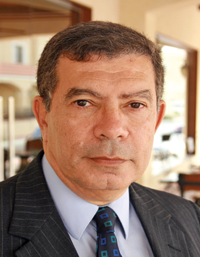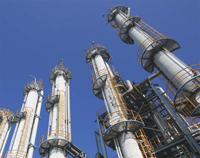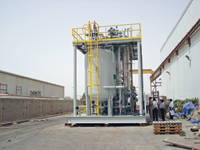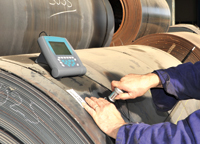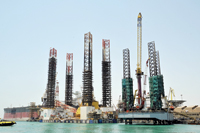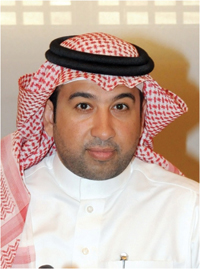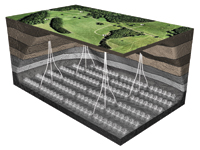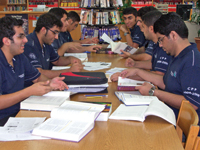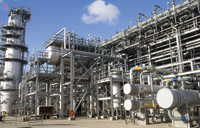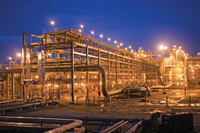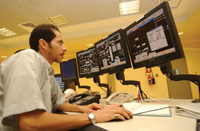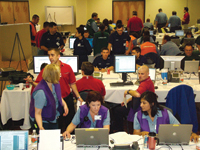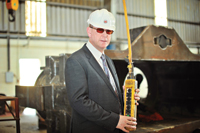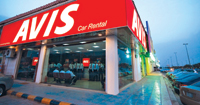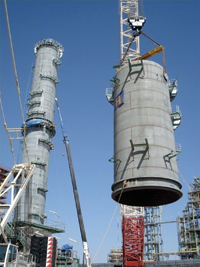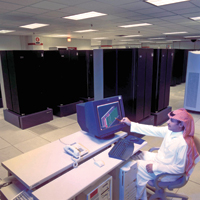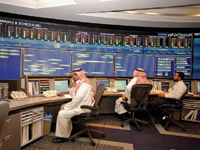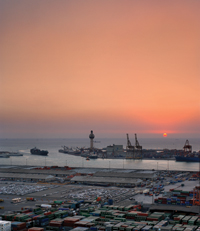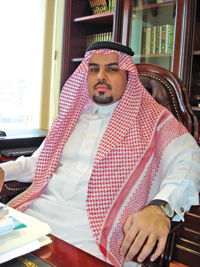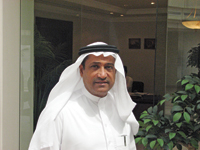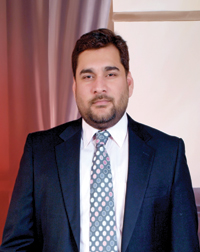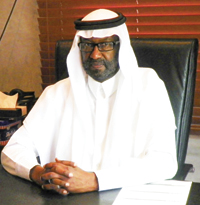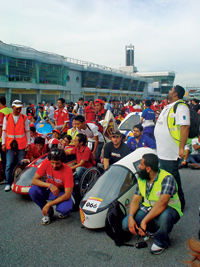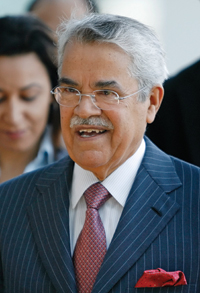
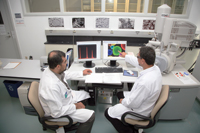 By the end of 2011, approximately 230 UPDC courses will have been delivered to over 4,000 employees
By the end of 2011, approximately 230 UPDC courses will have been delivered to over 4,000 employees
A NEW future-oriented training complex has changed the skyline of the Dhahran Core Area, Aramco’s administrative hub. The Upstream Professional Development Centre (UPDC) opened in February 2011 at Saudi Aramco’s headquarters in Dhahran, Saudi Arabia.
The new facility is four storeys, a technology rich and modern learning facility that is the new home for the innovative, immersive and integrated upstream technical training.
Along with the new facility come many changes and a new focus on the upstream training curriculum to ensure that Saudi Aramco continues to be an industry leader in technical training.
The UPDC is a key component of Saudi Aramco’s strategy to preparing the company for the future in the challenging hydrocarbon industry. The upstream training curriculum and development centre is the beginning of an even brighter future for Saudi Aramco.
Spearheading the UPDC project is Amin Nasser, senior vice president of the upstream business line, and key deputies helping Nasser oversee development include the continuing excellence director Khalid Zainalabedin and UPDC administrator Salam Salamy.
“UPDC is more than a facility … more than a training programme,” Nasser says. “It is Saudi Aramco’s proactive decision to stay ahead of the times. It represents our commitment to prepare our workforce for the unique challenges that lie ahead.”
“A changing world and a challenging industry require a different work environment and, therefore, different professional training,” Nasser continues. “We are committed to providing the necessary training that will enhance the development of our upstream professionals in every area critical to our success in the future.”
The future energy challenges will determine the kind of training required of UPDC. For example, global energy demands are expected to rise substantially within the next 30 years, posing enormous challenges to the industry.
To meet this challenge, Saudi Aramco has set aggressive targets of higher hydrocarbon discovery and recovery factors that require more complex activities and technologies in order to achieve.
Additionally exploration efforts are reaching into new environments, such as the Red Sea and deep gas exploration in the Arabian Gulf.
The technologies used during routine operations will continue to evolve, with new tools and advancements appearing at a rapid pace. With the arrival of vast amounts of real-time data that allow critical operational decisions to be made quickly, engineers and geoscientists are taking multidisciplinary collaboration and joint decision processes to a new level.
 |
|
UPDC ... training the staff |
Zainalabedin says: “UPDC is designed to address unprecedented professional development needs. Because of changing times, our training is focused on developing “whole” professionals who produce specific deliverables in Saudi Aramco workflows and systematic processes for Upstream. We aim to develop professionals that are flexible to change as times demand.”
Perhaps the most immediate challenge that UPDC faces is the “Big Crew Change.” Throughout the oil and gas industry, the bulk of experienced professionals are retiring from the upstream workforce and are often being replaced with inexperienced new graduates.
UPDC is working to bridge the growing upstream experience gap with aggressive training and mentoring programs. Communication and bonding networks now link disciplines to help young professionals tap the wide array of knowledge among senior professionals before they retire.
Zainalabedin emphasises: “Participants build relationships and habits that encourage critical thinking and looking at all options. We are providing training that is multidisciplinary and collaborative – senior professionals, young professionals. We are combining lessons of history with new technologies.”
The UPDC training curriculum has been developed for eight upstream job families: Geology, Geophysics, Petrophysics, Reservoir Engineering, Production Engineering, Facilities Engineering, Drilling and Workover and Upstream Computing.
Instructional design experts work closely with industry technical experts to design and update training to enhance learning and retention. The training is hands-on with reduced lecturing. Experiential learning is targeted by numerous practical applications that translate directly to the workplace.
Customised technology applications are also integrated into some courses, allowing the participants to learn important concepts and quickly perform analyses. To ensure job relevance, experienced Saudi Aramco subject matter experts instruct many of the courses.
Saudi Aramco data, workflows and tools are also incorporated into the training. Further enhancements are based on feedback to keep the courses fresh, dynamic and flexible.
The design integrates multiple resources – senior experience, youthful innovation, history, lessons learned, new technologies, new ideas, continuous information flow and training expertise.
By the end of 2011, approximately 230 UPDC courses will have been delivered to over 4,000 employees. In addition, 350 professional new hires will complete the entry-level Upstream Professional On-boarding Programme (UPOP), an intensive 11-week multidisciplinary course that provides young professionals with the tools to be effective contributors to Saudi Aramco.
After the UPOP, continuing training in the overall program can take from 3-5 years, depending on the job family, before professionals become independent contributors to their departments.
A formal competency assurance process is built into all UPDC courses. Beyond confirming whether trainees are achieving the required competencies, this process assesses the quality of the courses and identifies areas for improvement. A fast track to achieving competency targets is also available.
The framework is in place to significantly reduce both knowledge and experience gaps in an efficient manner. Previously, training was administered by departments and compartmentalised, and the disciplines did not know others’ workflow or job structures, or how jobs interfaced among different disciplines.
The UPDC system requires that training departments, managers and UPDC professionals work together, but success is the responsibility of trainees. Tamir Aggour, the training and development team leader, tells UPDC young professionals: “We provide the resources (in the UPDC). It’s up to you to take advantage of these resources and assume responsibility for your professional development.”
Adds Salamy: “At the end of the day, our product is people.” He meant that well-trained, self-development focused employees will not only provide great benefits to Saudi Aramco, but their skills and drive will spread excellence throughout the industry and their society. To support the effective and efficient training of upstream professionals, the new centre has 18 high-tech classrooms with wall-to-wall viewing screens, LCD touch screens with 3D capability and breakout areas.
The centre provides a drilling simulator where participants actually perform operations on a simulated rig. There is also a virtual reality simulator where participants are immersed into a variety of Saudi Aramco virtual environments to perform exercises that include inspecting rock and fluid properties “downhole” and viewing the sedimentology and stratigraphy of rock outcrops.



















































































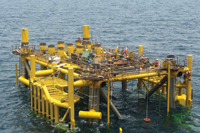
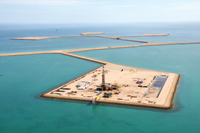


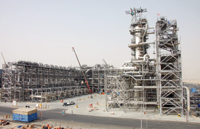


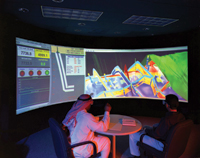

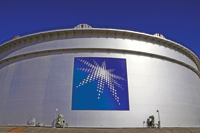
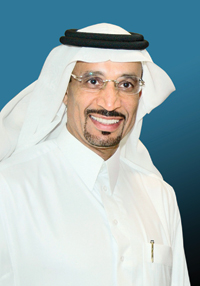


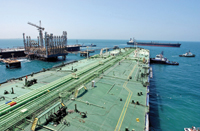
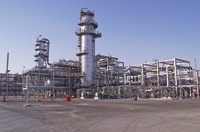
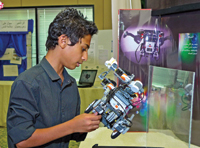
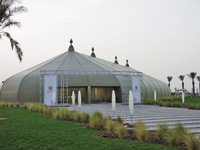
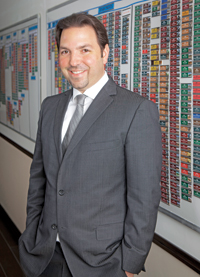
.jpg)
